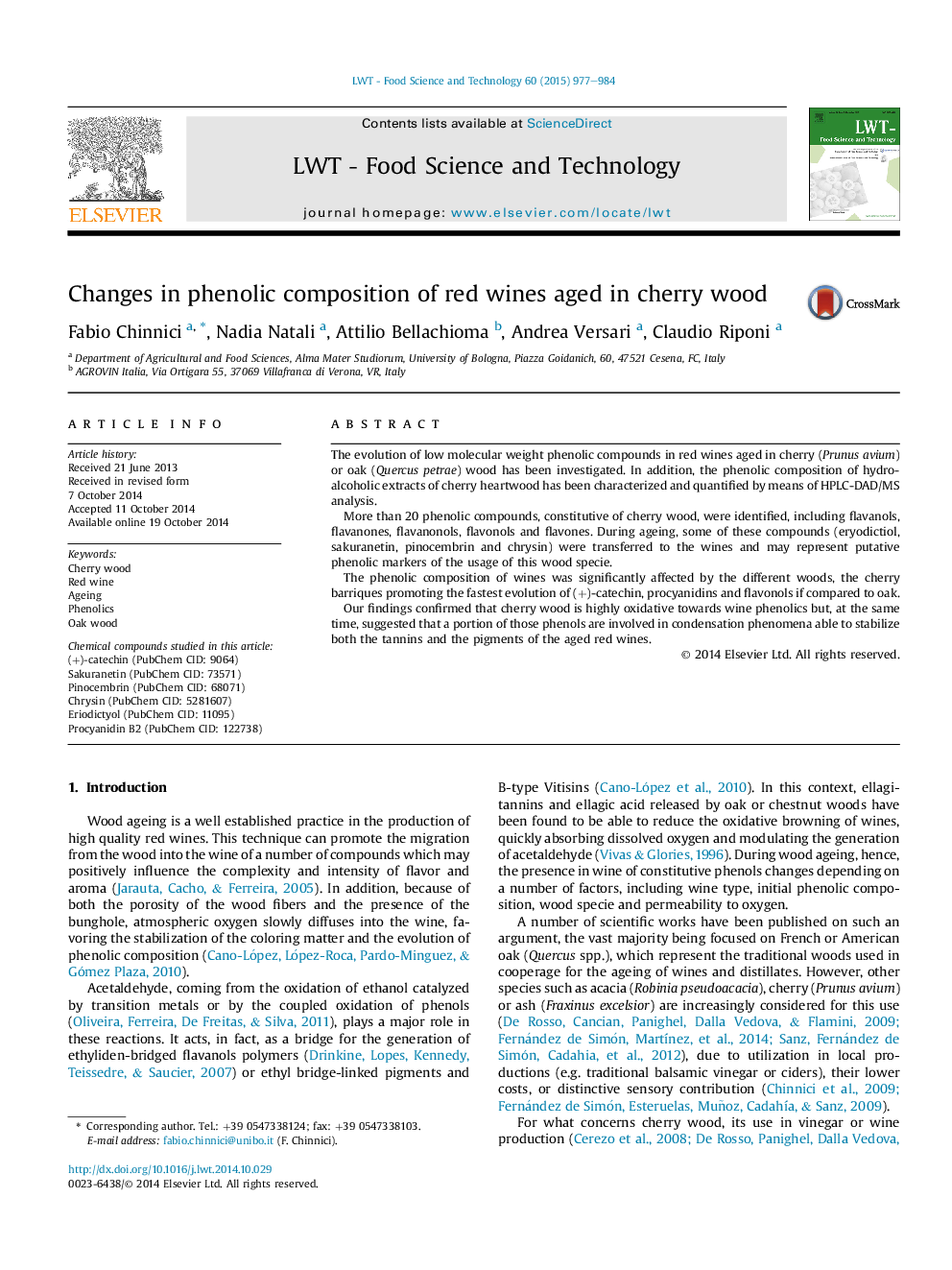| Article ID | Journal | Published Year | Pages | File Type |
|---|---|---|---|---|
| 6402496 | LWT - Food Science and Technology | 2015 | 8 Pages |
â¢We compare the phenolic evolution of red wines aged in cherry or oak wood.â¢More than 20 phenolic compounds have been identified and quantified in cherry wood.â¢During ageing, cherry wood promoted a faster oxidation of red wines phenolics.â¢Some phenols are ceased to the wine and represent markers of the use of cherry wood.
The evolution of low molecular weight phenolic compounds in red wines aged in cherry (Prunus avium) or oak (Quercus petrae) wood has been investigated. In addition, the phenolic composition of hydroalcoholic extracts of cherry heartwood has been characterized and quantified by means of HPLC-DAD/MS analysis.More than 20 phenolic compounds, constitutive of cherry wood, were identified, including flavanols, flavanones, flavanonols, flavonols and flavones. During ageing, some of these compounds (eryodictiol, sakuranetin, pinocembrin and chrysin) were transferred to the wines and may represent putative phenolic markers of the usage of this wood specie.The phenolic composition of wines was significantly affected by the different woods, the cherry barriques promoting the fastest evolution of (+)-catechin, procyanidins and flavonols if compared to oak.Our findings confirmed that cherry wood is highly oxidative towards wine phenolics but, at the same time, suggested that a portion of those phenols are involved in condensation phenomena able to stabilize both the tannins and the pigments of the aged red wines.
